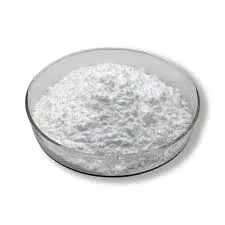
jul. . 27, 2024 11:02 Back to list
Understanding Hydroxyethyl Cellulose and Its Applications in Various Industries and Products
Understanding Hydroxyethyl Cellulose Properties, Uses, and Benefits
Hydroxyethyl cellulose (HEC) is a water-soluble polymer derived from cellulose, which is a natural polymer obtained from plant cell walls. It is widely recognized for its thickening, emulsifying, and film-forming properties, making it a valuable ingredient in various industries, including cosmetics, pharmaceuticals, and food.
Chemical Structure and Properties
HEC is synthesized by chemically modifying cellulose with ethylene oxide. This modification introduces hydroxyethyl groups into the cellulose chain. The resulting compound is a white, odorless powder that dissolves in water to form a viscous solution. The degree of substitution, which indicates how many hydroxyethyl groups have been introduced into the cellulose chain, can vary, affecting its solubility and viscosity.
One of the key properties of hydroxyethyl cellulose is its ability to swell in water, leading to increased viscosity. This feature allows it to function effectively as a thickener in various formulations. Additionally, HEC is non-ionic, meaning it does not carry a charge, which makes it compatible with a wide range of other ingredients. This property is particularly advantageous in cosmetic and pharmaceutical formulations, where stability and compatibility are crucial.
Applications of Hydroxyethyl Cellulose
1. Cosmetics and Personal Care Products HEC is commonly used in lotions, creams, shampoos, and gels. It acts as a thickener, stabilizer, and emulsifier, improving the texture and consistency of these products. Due to its excellent water retention properties, HEC helps to keep the skin moisturized, making it a desirable ingredient in many skincare formulations.
2. Pharmaceuticals In the pharmaceutical industry, HEC is employed as a binding agent in tablets and as a thickening agent in topical formulations. Its ability to enhance the viscosity of gels and ointments ensures better adherence to the skin, providing a more effective delivery system for active ingredients.
3. Food Industry HEC is also utilized in the food industry as a thickener and stabilizer in sauces, dressings, and processed foods. It helps to improve the texture of food products and prevent separation, ensuring a homogenous mixture.
what is hydroxyethyl cellulose

4. Construction In the construction industry, hydroxyethyl cellulose is used as an additive in cement, mortar, and tile adhesives. It enhances workability, improves adhesion, and reduces water permeability, contributing to the overall durability of construction materials.
Benefits of Hydroxyethyl Cellulose
The versatility of hydroxyethyl cellulose lies in its numerous benefits. Some of the notable advantages include
- Non-toxic and Biodegradable Being derived from natural sources, HEC is considered safe for use in various applications. It is non-toxic and biodegradable, which aligns with the increasing demand for eco-friendly and sustainable products.
- Versatile Functionality HEC can perform multiple roles in formulations, including thickening, stabilizing, and emulsifying, reducing the need for multiple ingredients in a product.
- Improved Product Performance The addition of HEC can enhance the performance of products by improving their texture, stability, and user experience.
Conclusion
Hydroxyethyl cellulose is a remarkable ingredient that has found its way into a plethora of industries due to its functional properties and versatility. Its ability to improve the performance and texture of products makes it a sought-after component in cosmetics, pharmaceuticals, food, and construction. As the demand for sustainable and effective ingredients continues to rise, HEC's role in formulating eco-friendly and high-performance products is more important than ever. With ongoing research and innovations, the potential applications and benefits of hydroxyethyl cellulose are expected to expand, making it a key player in various fields.
-
Unlocking the Benefits of HPMC Products: A Gateway to Versatile Applications
NewsAug.07,2025
-
Unleashing the Potential of HPMC Ashland: A Comprehensive Look
NewsAug.07,2025
-
Tile Bonding Cellulose: The Key to Superior Adhesion and Durability
NewsAug.07,2025
-
Hydroxypropyl Methylcellulose Powder: The Versatile Component in Modern Pharmaceuticals
NewsAug.07,2025
-
Hydroxyethyl Cellulose: The Versatile Solution for Various Industries
NewsAug.07,2025
-
Hydroxyethyl Cellulose (HEC): The Versatile Polymer for Various Applications
NewsAug.07,2025







